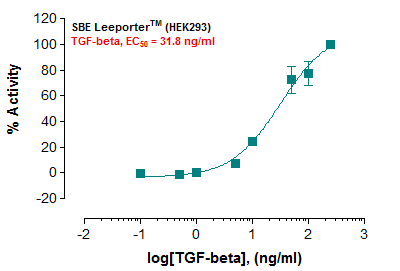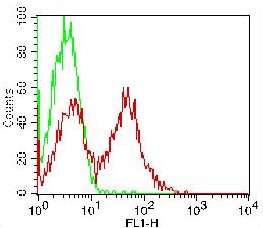Polyclonal Antibody to Integrin beta3 (Ab-785)

Figure 1: Western blot analysis of extracts from HL60 and HT29 cells using Integrin b3(Ab-785) Antibody 35-1605 .
Roll over image to zoom in
Shipping Info:
For estimated delivery dates, please contact us at [email protected]
| Format : | Purified |
| Amount : | 100 µl |
| Isotype : | Rabbit IgG |
| Content : | Supplied at 1.0mg/mL in phosphate buffered saline (without Mg2+ and Ca2+), pH 7.4, 150mM NaCl, 0.02% sodium azide and 50% glycerol. |
| Storage condition : | Store the antibody at 4°C, stable for 6 months. For long-term storage, store at -20°C. Avoid repeated freeze and thaw cycles. |
The Itg-Beta3 gene encodes the beta subunit of the platelet membrane adhesive protein receptor complex Itg-Beta3 protein, which belongs to the Integrin class of cell adhesion molecule receptors that share a common heterotrimeric structure with a and Beta subunits. It is a common Beta subunit of the platelet complex and of two other Integrins (Fibronectin and Vitronectin Receptors), which have distinct a subunits. Itg-Beta3 has been implicated in a wide variety of functions, including platelet aggregation and thrombosis and implantation, placentation, angiogenesis, bone remodeling, and tumor progression. Glanzmann Thrombasthenia can result from defects in the genes for either the Itg-a2B or the Itg-Beta3 subunit
Sujoy Bhattacharya, et al. (2006) Biochem J. August 1; 397(Pt 3): 437
Predicted MW: 110kd, Western blotting: 1:500~1:1000
For Research Use Only. Not for use in diagnostic/therapeutics procedures.
| Subcellular location: | Cell membrane, Cell projection, Cell junction |
| Post transnational modification: | Phosphorylated on tyrosine residues in response to thrombin-induced platelet aggregation. Probably involved in outside-in signaling. A peptide (AA 740-762) is capable of binding GRB2 only when both Tyr-773 and Tyr-785 are phosphorylated. Phosphorylation of Thr-779 inhibits SHC binding. |
| Tissue Specificity: | Isoform beta-3A and isoform beta-3C are widely expressed. Isoform beta-3A is specifically expressed in osteoblast cells; isoform beta-3C is specifically expressed in prostate and testis. |
| BioGrid: | 109896. 41 interactions. |
|
There are currently no product reviews
|















.png)











